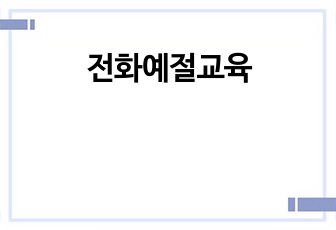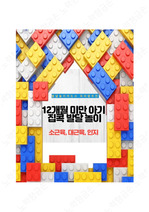嬰幼兒를 위한 家庭中心 父母敎育 프로그램의 效果
* 본 문서는 배포용으로 복사 및 편집이 불가합니다.
서지정보
ㆍ발행기관 : 한국교육학회
ㆍ수록지정보 : 교육학연구 / 29권 / 4호
ㆍ저자명 : 李星珍, 李奇雨
ㆍ저자명 : 李星珍, 李奇雨
목차
Ⅰ. KIRBS 家庭中心 父母敎育 프로그램의 背景Ⅱ. 先行硏究
Ⅲ. 硏究 方法
Ⅳ. 結果 및 解釋
Ⅴ. 論議 및 結論
參考文獻
ABSTRACT
영어 초록
The report introduces the Home-Based Early Childhood Education Program developed by the KIRBS(Korean Institute for Research in the Behavioral Sciences) and presents the results of the study on effectiveness of the program carried out in 1988.A. Introduction of the Program
The main objectives of the program were to educate the parents (mothers) through trained home-visitors regarding the knowledge, skills and attitudes toward child rearing and thereby help parents be able to facilitate development of their children. Specifically, the program was ⑴ to help parents recognize the importance of parents' role, ⑵ to help parents have self-efficacy about rearing children, and ⑶ ultimately to help parents help their children develop basic life skills and develop their potentiality in physical, cognitive, linguistic, and socio-emotional areas.
The program package includes a parent education program and a child education program. The parent education program contains a wide variety of information about child rearing, stimulation, and education in order to help parents not only acquire the knowledge and skills but also enhance the sense of self-efficacy regarding child rearing. These knowledges and skills were organized into a set of 60 eight-page booklets, 12 each for the child ages 0-6 months, 7-12 months, 13-18 months, 19-24 months, and 25-36 months, respectively. The child porgram includes such area as self-help, number, language and communication, social behavior, safety, and other activities appropriate for their ages.
The program was delivered to the mothers and children through the trained home visitors who were the female college graduates majored in early childhood education and were trained by the research team before they were assigned to 5-6 families each in the urban slums. The home-visitors made a total of 24 visits in 1988, evenly distributed year round. Upon visiting, they handed out to mothers the appropriate booklets, explained about the contents, and demonstrated as necessary how to use the know ledges and skills in the booklets. Each home-visitor recorded daily activities in the diary provided to her.
B. Effectiveness of the Program
METHOD
Subjects
The families having children aged 0 to 30 months were selected in Seoul city, Seongnam city, and Kwangju city. When the program startd, there were 162 pairs of mothers and children who were divided into five age brackets. At the end of the project, there remained 138 pairs. The drop-out rate was 14.8%. The average ages of the mothers and fathers were 28 years and 32 years old, respectively.
Measures
In order to evaluate the effectiveness of the program, mothers were given pre-tests in the begining of the home-visiting proper and during the last part of home visiting were they given the post-test. In order to test the size of change, Parent Attitudes Questionaire, Home Observation for Mea-surement of Environment, Teaching Observation Technique of Mother, and Social Maturity Test were administered.
RESULTS
1. Change in Parent Attitudes : The pre-and post-test comparison of the scores revealed significant attitudinal changes across the three dimensions of attitiudes toward child education(t=4.50, p<.01), attitude toward children (t=2.23, p<.05), and belief about being parent(t=2.16, p<.05).
2. Change in Family Enviromnent : Data obtained through observation of mother and interview regarding family environment showed statistically significant change between pre-test and post-test across all 6 dimensions. Changes in physical environment, provision of play materials, variety in daily stimulation, and mother's emotional and verbal responsivity are statistically significant at p<.01 level.
3. Change in Mother's Verbal Instruction : Mother's verbal behavior was observed while she was interacting with her child in play activities and in making playthings. Observations in three 20-minutes sessions at the begining and end of the intervention yielded average frequencies over 2 dimensions(or 12 sub-dimensions). Amount of explanation increased and so did the frequency in 4 of 7 sub-dimensions pertaining to democratic verbalizations. All of sub-dimensions of the mothers' authoritative verbalizations decreased significantly.
4. Effects of Mother's Change on Children : It was expected that positive changes in mother by means of demonstration and explanation by means of brochure and home-visiting will have positive impact on children. Since the children in our group were too young to receive psychological test appropriately for tapping their developmental levels, we resorted to an indirect method of measuring changes in children. The home visitors administered through interview the social maturity scale to the mothers who responded to each item. The amount of social maturity age increase tended to be higher among the younger children than among the older. The children in the age bracket of 7-12 months showed the highest increase.
5. Response of Parents and Home Visitors : Quantitative analyses thus show positive changes in mothers and children. These quantitative results aside, from the diffusion vantage point more important of the program would be how the parents felt about the porgram. A narrative report indicated that the program was received positively by the parents. This was shown by the opinion survey after the intervention. Subsequent to the intervention, the home visitors and the parents were inquired about how they felt about the porgram. The majority of parents(98.9%) felt that the program was helpful for the education of children, brothers and sisters changed positively, and neighbors wanted to participate in the program. All home visitors were satisfied with the participation in this program as home visitors and responded that the program was helpful for education of children.
참고 자료
없음태그
"교육학연구"의 다른 논문
 교육자치제 시대의 학교 의사결정 참여모형에 대한 새로운 시각13페이지
교육자치제 시대의 학교 의사결정 참여모형에 대한 새로운 시각13페이지 敎育法의 基本原理와 構造에 관한 法哲學的 分析硏究19페이지
敎育法의 基本原理와 構造에 관한 法哲學的 分析硏究19페이지 親社會的 行動의 育成方法13페이지
親社會的 行動의 育成方法13페이지 地域 및 學校間 敎育隔差 要因分析26페이지
地域 및 學校間 敎育隔差 要因分析26페이지 교육학 석사학위 논문에 적용한 통계적 방법의 분석 평가 연구21페이지
교육학 석사학위 논문에 적용한 통계적 방법의 분석 평가 연구21페이지 컴퓨터 補助 協同學習의 敎育的 活用을 위한 一考察20페이지
컴퓨터 補助 協同學習의 敎育的 活用을 위한 一考察20페이지 認知樣式과 授業前ㆍ後方略으로서의 目標에 따른 學習成果 分析15페이지
認知樣式과 授業前ㆍ後方略으로서의 目標에 따른 學習成果 分析15페이지 自我槪念의 發達的 變‘化에 관한 硏究32페이지
自我槪念의 發達的 變‘化에 관한 硏究32페이지 문제 해결 전략의 지도에 관한 연구 동향16페이지
문제 해결 전략의 지도에 관한 연구 동향16페이지 敎育工學 硏究의 社會的 含意10페이지
敎育工學 硏究의 社會的 含意10페이지




















